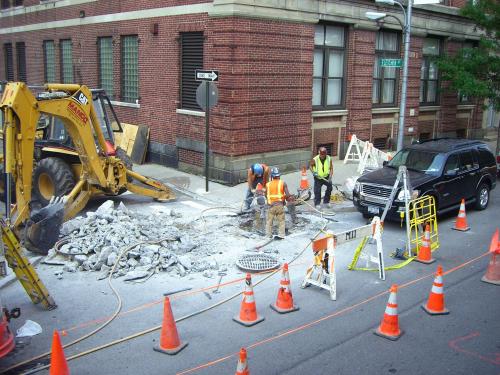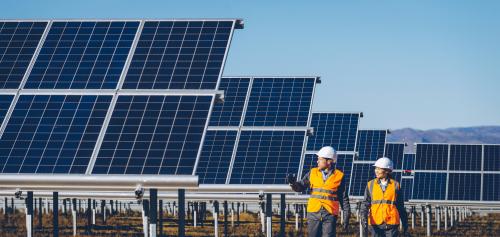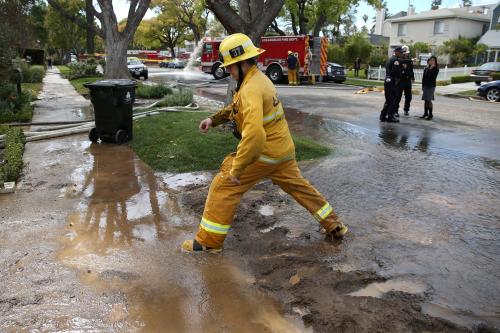Another Infrastructure Week (the real one) just wrapped up, and after seven years many of the core themes remain the same. Crumbling roads and bridges. Desperate calls for new investment. A high national price tag for repair and revitalization. Little progress.
What makes this year different is a $2 trillion announcement and the continued drama of White House and Congressional meetings to motivate action. But are major media announcements what the country needs to reform how we invest in infrastructure?
The answer is no. Federal leaders need to recognize and reward places that take the initiative on infrastructure investment. Otherwise, there will be a continued lack of action. Instead of big dollar announcements, setting expectations that proactive state and local investments will be rewarded—for example, with matching funds—can have far more immediate value.
Federal leaders need to recognize and reward places that take the initiative on infrastructure investment. Otherwise, there will be a continued lack of action.
It’s easy to argue that state and local governments should be proactive and get their houses in order on their own, but the current system simply does not incentivize them to do so. Although federal funding is notoriously difficult to get, hard to manage, and slow to materialize, it is still preferred by lawmakers because it takes the pressure off local, zero-sum budget decisions and avoids even more difficult trade-offs between immediate needs and long-term investments.
Given that reality, it’s completely rational for state and local officials to wait (or exercise their “option”) and hold their high-dollar projects for when federal funds eventually become available. The alternative is to risk becoming ineligible for federal funding or being the last to pay “full price” before federal funds start to flow.
In California, for instance, water and electric utilities both explicitly and implicitly consider the option value of projects, including delaying or abandoning infrastructure investments altogether. This poses significant risks; deferred maintenance has been singled out as one of the causes of the devastating 2018 Camp Fire.
If media reports and promises of funding on the horizon are potentially a source of false hope and delay, what can congressional leaders do to fix this perverse incentive? Three things:
1. Develop a new system for rewarding proactive investments by states and cities and reverse the current incentive to hold back projects and jump in line only when new federal money is available. For instance, offering matching funds or greater spending flexibility to communities that address deferred maintenance backlogs can help ensure that shiny new projects don’t get ahead of basic needs. Federal funds should not crowd out private capital for the most viable projects and they should ensure that the neediest communities, where existing infrastructure systems are in the greatest disrepair, are not left even further behind. In essence, projects like high-speed rail in wealthy coastal states should not be constantly prioritized over projects like fixing lead pipes in drinking water systems in struggling regions.
2. Focus on the early stages of projects. The design and engineering documents and technical analyses that are required for permitting can get very expensive, especially for larger infrastructure projects. The cost of these predevelopment activities is frequently a major barrier. There is no such thing as shovel-ready project, but in writing the rules for new funding, Congress should create clear cost-recovery programs for predevelopment to help cities and states get closer faster to getting projects off the drawing board and in the ground.
3. Prioritize resilience. Recognize that infrastructure needs are changing faster than most cities and states can keep up with. Simply rebuilding what we have is not a recipe for future economic competitiveness. Federal funding formulas often rely on standard benefit-cost analysis, which tends to disadvantage projects focused on protection and prevention. For example, the benefit of a new flood barrier is what doesn’t happen: a storm hits, but a community isn’t devastated. Finding ways to appropriately value and weight resilience projects in federal funding formulas is essential if we are going to build systems that serve us well through the next generation.
What this Administration and Congress could do, rather than making big dollar announcements, is signal the intent to reward proactive state and local investments with matching funds.
Uncertainty kills infrastructure. Everyone in the private sector understands the strict costs of delays—materials that increase in price and keeping staff and equipment on the sidelines are just two examples—but the public cost is far less obvious. What this Administration and Congress could do, rather than making big dollar announcements, is signal the intent to reward proactive state and local investments with matching funds. Then create a clear timeline and set clear expectations.
The age-old adage in infrastructure is “if you build it they will come.” What Congressional leaders need to recognize about infrastructure funding is that if you promise it, they will wait.







Commentary
The danger of a $2 trillion infrastructure promise
May 28, 2019